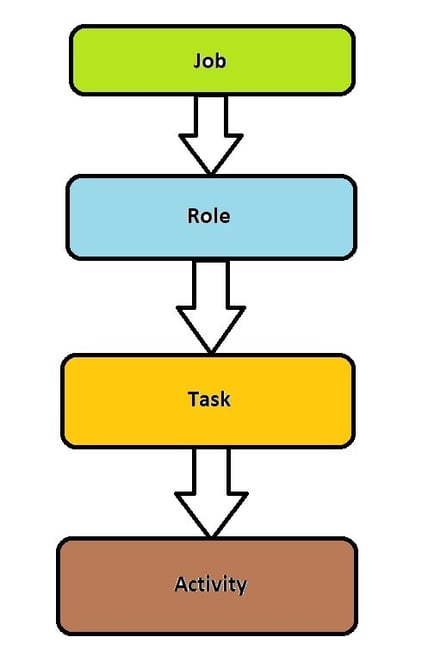What is a competency definition?
You have discussed and finalized the different skill levels for your competency evaluation. But how to accurately classify your workforce on the scale you have zeroed in on? Employees have a hard time deciding what skill level they currently are at if they do not have a clear understanding of what each level represents. Managers face the same dilemma while evaluating. During designing these different levels, organizations need to follow the 4 pillars of writing competency definitions.
Employees and Managers need to understand what different competency levels are. This enables them to identify where they are and discover the improvements needed to rise up. Similarly, organizations also need to understand this basic fact. They have to describe various levels of a job and what every skill/competency level signifies.
How to understand any given Job?
It is crucial to know what all constitutes a given Job role. This, in turn, would help us in designing the competency definition closest to what we require.

- Job is the collection of Roles, Tasks, and Activities. For example, let’s take the Job of a paint-booth supervisor at an automobile manufacturing plant.
- The Role is the outlined function of a job. The role of the paint-booth supervisor is to make sure that all vehicles should have a uniform quality of paint finish with pre-defined color accuracy.
- The Task is a section of the job or role with clearly defined responsibilities. One of the tasks of a paint-booth supervisor is to make sure that the paint robots are applying a uniform coat of paint.
- Activity is basically an action undertaken to fulfill a task at hand. The paint-booth supervisor will have to make sure that the machines are serviced regularly and their sensors are monitored, checked, and cleaned.
Finally, we need to factor in the 4 pillars of writing competency definitions
- Identifying similarities and differences between competencies: Sometimes we try and club different competencies under one heading. This can reduce the number of competencies in a job role. However, sometimes, it can cause incorrect evaluations. For example, good people skills need not lead to good leadership skills so clubbing them together is a bad idea.
- Describing the competencies in clear and simple terms: The easier the level descriptions are to understand, the better the evaluation will be.
- Descriptions should have objective terms: If we can define levels based on clear pre-defined objective terms, we will get a more accurate evaluation.
- Having a useful outcome/data to work on: Having defined metrics helps in the clear demarcation of levels. This in turn leads to a more accurate evaluation. Which in turn leads to the effective development of future learnings.
In Conclusion
If we can take into account these 4 pillars, we will have an accurate picture of where our employees stand. What their individual competencies are, where they should be and what needs to be done to get there. We at SkillsDB cannot emphasize enough the importance of having clear, understandable, and differentiable competency levels. In fact, it is one of the first things we ask our clients to decide upon before starting their competency evaluations.
Also read: Skills & Competencies, Similar but Different
Also read: How to best Implement a Competency-Based Training Program
Further read: Competency Based Assessments: The Foundation for Success in the Business World